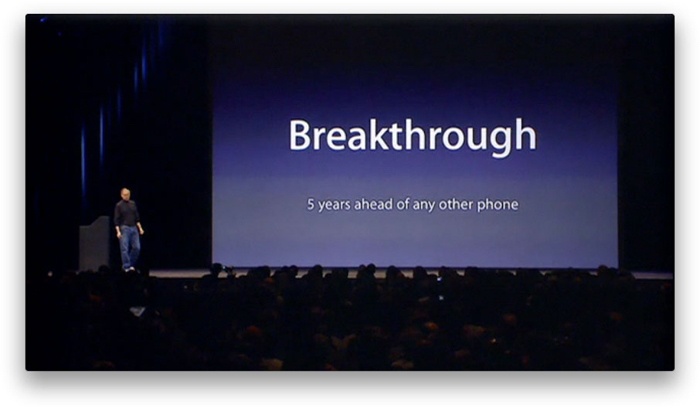The latest version of Dataiku came out last week, and we were super excited about the integration of Spark! But Dataiku 2.1 has so much cool new stuff in it, I just had to tell you about all of our new features!
Heads Up!
This blog post is about an older version of Dataiku. See the release notes for the latest version.

Steve says it best: the future is now.
Honestly, we were being modest when we made this version a minor release. Some would even say the release of Dataiku 2.1 is as big of a deal as the Apple Keynote. It has so many new features that make it a great tool to use every day. But you shouldn't take my word for it: let me show you the Apple way.
Better Graphs

Design a new data exploration experience
Let’s start with the simplest Dataiku 2.1 innovation: the new and improved charts module.
We’ve redesigned the whole visual interface to make it easier to get the data visualization you really want. And it’s not just prettier; we’ve also added lots of new charts so you can find the right one to explore your data. There are now really too many for me to enumerate here, so go check it out.

Use, Create, and Share Your Own Code Snippets

Easily develop and share your Dataiku apps
Dataiku makes writing code in the notebooks so much easier with code samples. As you use the notebook, add your own favorite code snippets with the bits you find that you’re rewriting all the time! We’ve preloaded a bunch so now you can start right away with pre-written common functions.
And because Dataiku was built as a collaborative tool first and foremost, you can share these with all your Dataiku-friends. The learning curve in Dataiku just got that much steeper. (Yes that makes sense... you learn faster!)

The Freedom to Do Exactly What You Want With Your Data
.gif)
Dataiku 2.1, the biggest news in Dataiku since DSS 2.0
Create your own folders of filesystem-hosted datasets where you can store any kind of data and read and write to and from them with Dataiku code recipes. You can also make your datasets editable and add notes about your data. Or create editable datasets from scratch. Did I hear uhm why?
Well, for those times you want to add information to your data without having to change your dataset, write comments about a client contact or a transaction, or create a reference table to enrich a dataset with specific information. You can create an editable dataset from an existing dataset or from scratch like you would for an Excel file or a Google spreadsheet.

An Even More Connected Dataiku DSS
Dataiku 2.1 takes it one step further to bring data from absolutely all of your data sources — seamlessly — with plugins. Check out Dataiku’s certified plugins or our community-developed connectors to connect to all your data sources, adding custom code snippets or sample projects, and plugins to enrich your data with APIs and push it to anywhere you really need it. All this is done through our visual interface. That’s right, no code.
Anyone can develop their own plugins easily from their own code and add them to our community platform. So your team and your whole company can profit from your projects. Bragging rights are all yours.

Dataiku for Developers
Our public API is also there to help developers get real-life business uses from projects.
Shell recipes are the final step to a complete collaborative experience. They make it possible for your data infrastructure developers to use their languages in Dataiku and to collaborate with data scientists and analysts in real time.
.jpg)
That's not all. Don't forget Spark.
Dataiku 2.1 Also Comes With the Power of Spark
Spark speed for data preparation in the visual interface, SQL, R, and Python recipes, distributed machine learning and training and prediction in your flow.
Enjoy the next big thing. The future is here. Start writing YOUR data story now.







